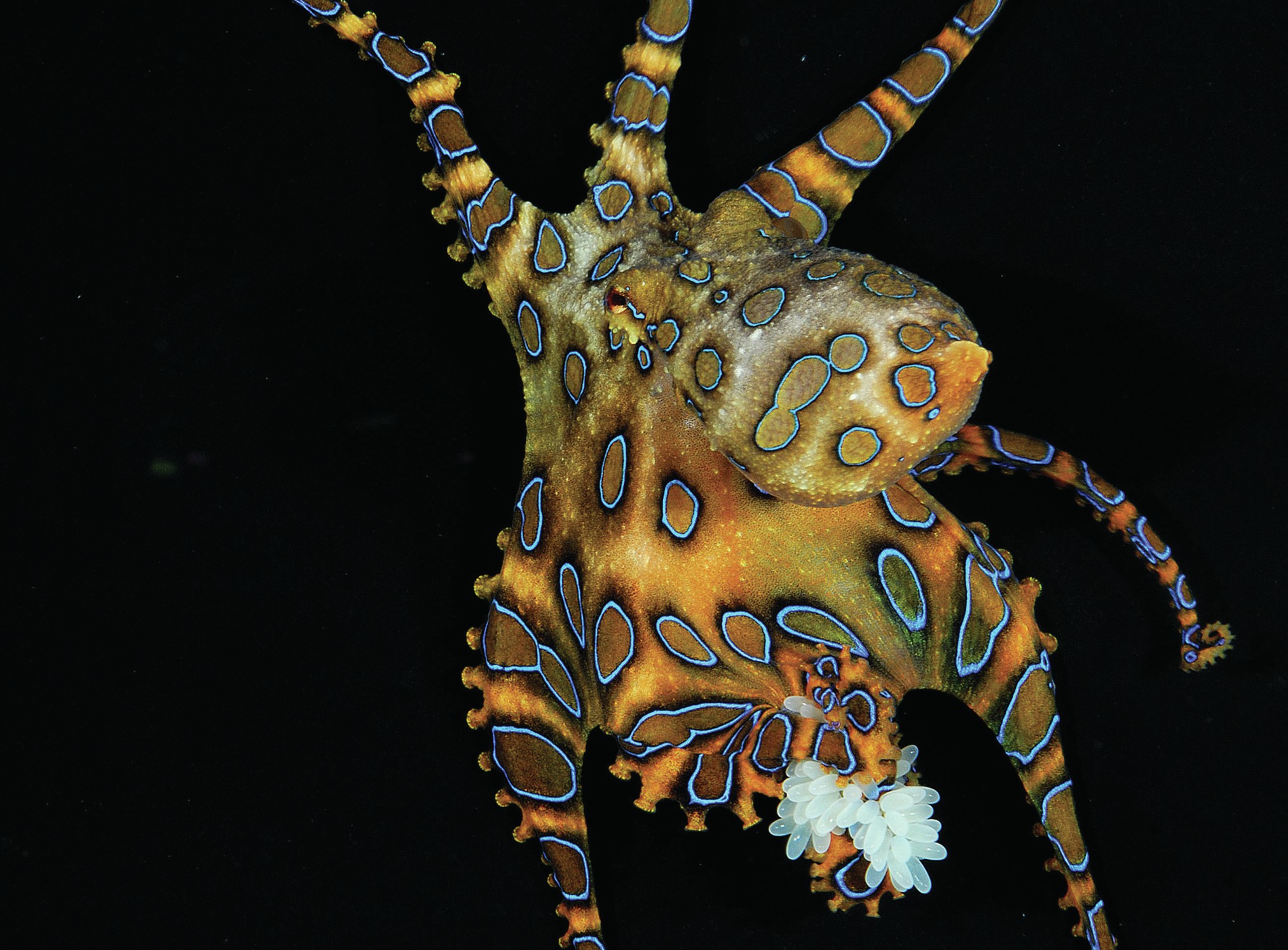
Blue-ringed octopuses inhabit shallow seas from Japan to Australia. Although tiny, with arms less than 10 cm long, they possess one of the most potent toxins known. The toxin is injected from the octopus’s salivary glands when it bites its prey or an attacker, and one animal has enough toxin to kill ten humans. The toxin contains a mixture of several compounds but the deadliest ingredient is a nerve toxin called tetrodotoxin. Tetrodotoxin also occurs in puffer fish, which are a delicacy in Japan — perhaps the risk of poisoning adds a shiver of excitement. Tetrodotoxin is also found in some newts, toads, crabs and marine worms. The odd distribution of this toxin among unrelated groups of animals may be because the toxin is produced by bacteria inside the bodies of these animals.
Tetrodotoxin acts on sodium channels in cell membranes. It blocks the entry of sodium ions during activity of nerves and muscles, so that the body becomes paralysed. Heart muscle is relatively resistant to tetrodotoxin, and the heart continues to beat while the animal or human becomes paralysed. If paralysis in humans extends to the diaphragm and other muscles involved in breathing, artificial respiration is essential for survival.
Your organisation does not have access to this article.
Sign up today to give your students the edge they need to achieve their best grades with subject expertise
Subscribe




